An ancient Egyptian city buried in California? Yes, you read that right. We recently took a 6-day journey through California’s central coast. While researching unique and quirky places along the way (as well as bakeries… you know my priorities!), I came across a hidden gem known locally as “The City of the Pharaoh” — where towering Egyptian statues of Ramses II and temple gates once stood more than 12 stories tall and 800 feet wide!
But how did it get here? And why California? All very good questions!
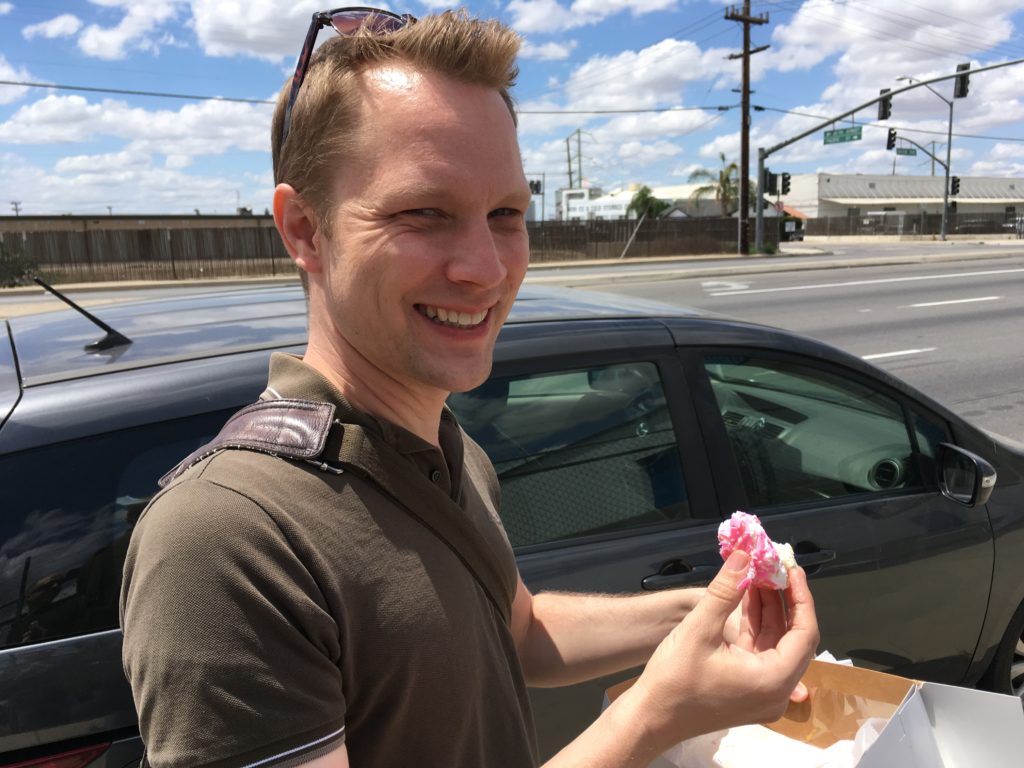
Kevin enjoys a California road trip full of quirky stops… oh, and bakeries!
We’re in the land of Southern California — home to fake tans, big dreams and apparently the perfect fake backdrop for ancient Egypt. It was 1923 when filmmaker Cecil. B. DeMille built the largest set in movie history in the dunes near Guadalupe, Calif., for his silent (and early Technicolor) epic, The Ten Commandments.
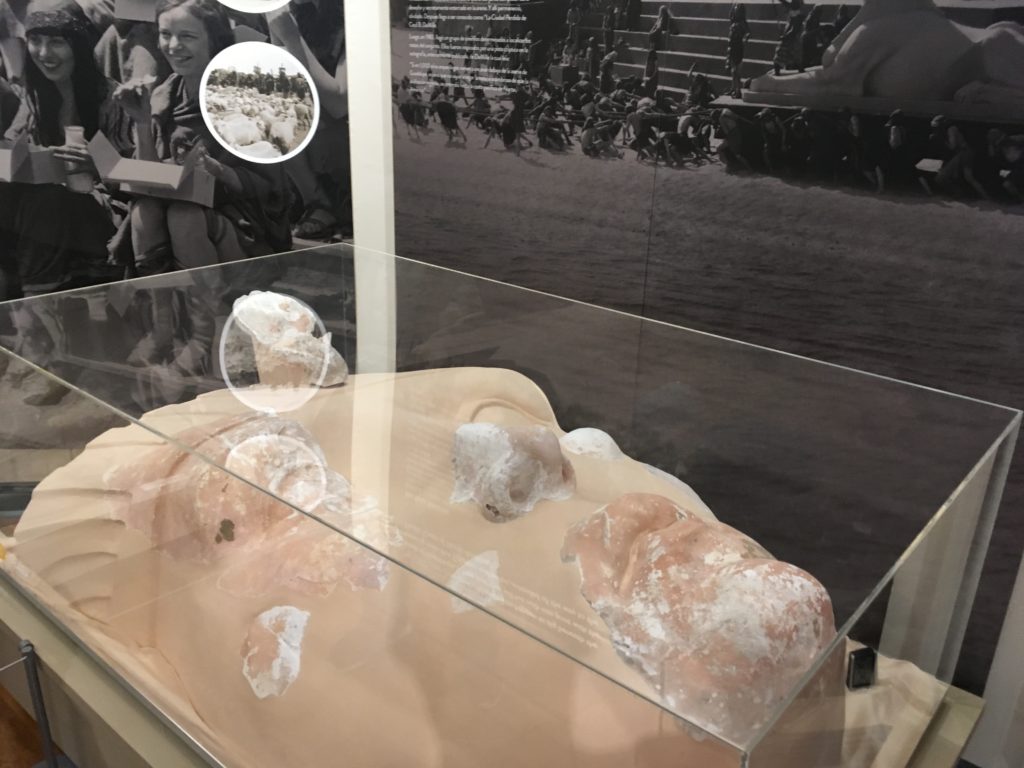
What a find – the face of a sphinx from The Ten Commandments
After filming was complete, DeMille ordered that the entire set be dismantled and secretly buried in the dunes. While most of the set is long gone, there is one group digging up one of the most elaborate sets Hollywood ever created.

The Dunes Center in Guadalupe (an easy 30 minutes drive south of San Luis Obispo) recently made headlines for its latest discovery. This past week they threw a party (they called “Spinx and Drinks,” which I love!) to unveil their latest big finding: a beautifully preserved 10-foot-tall sphinx head from the 4-hour film.
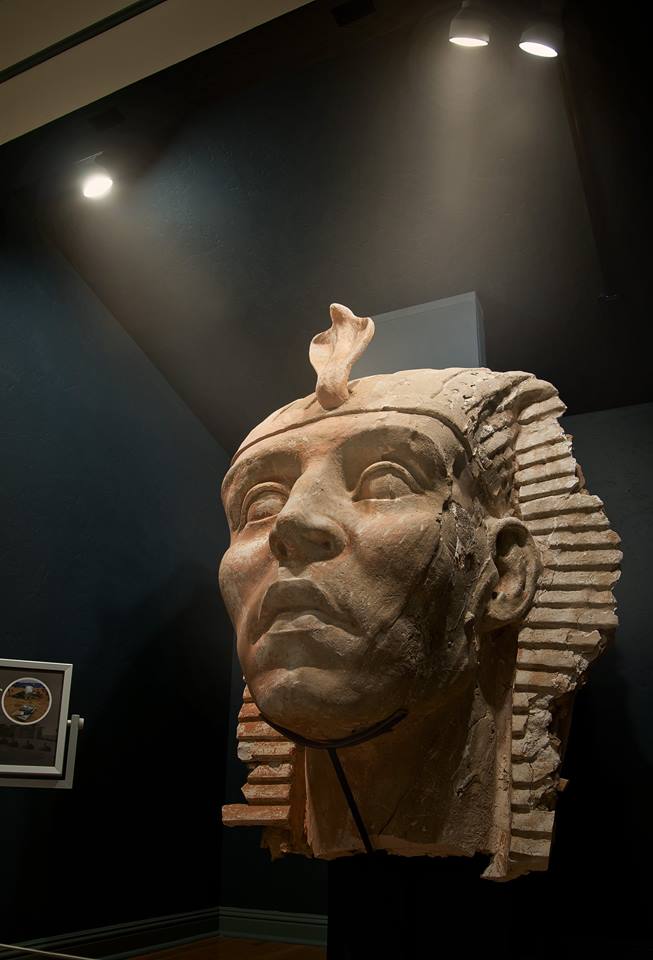
The newly-excavated sphinx head, nearly perfectly intact from the filming of The Ten Commandments
The Dune Center, while compact, covers not only the film’s history but includes interactive displays on the area’s local community and environment. We recommend taking a guided tour, which is included with the $5 admission, to get a full appreciation of it all. Our guide Gaby rolled out the red carpet and explained how this tiny coastal community became home to some of Hollywood’s biggest blockbusters.
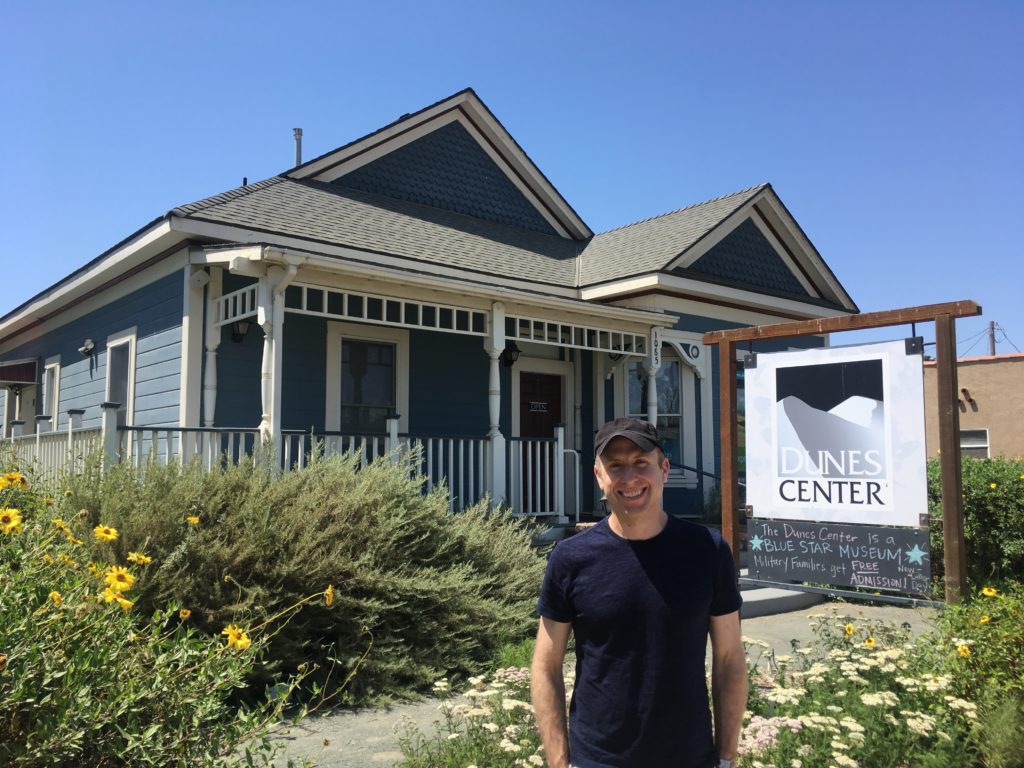
Outside the Dunes Center, a must stop!
The intricate set was the brainchild of Art Deco designer Paul Iribe and featured 21 sphinxes (weighing 5 tons!). After filming ended, DeMille abandoned the set, and it became known by film buffs as the “Lost City of Cecil B. DeMille.”
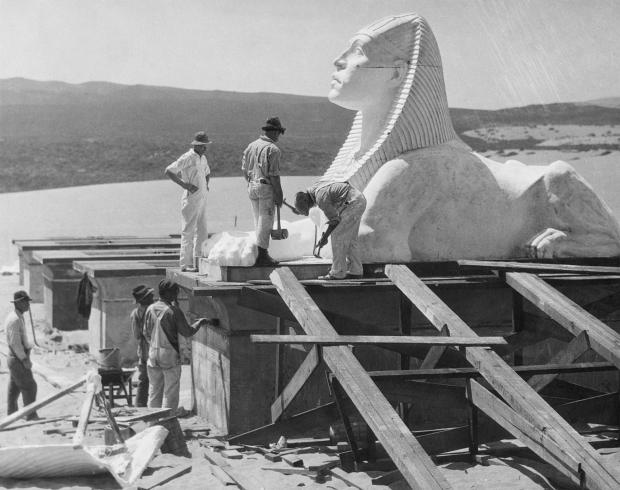
A historic shot of the massive sets created for The Ten Commandments, shot on the nearby dunes
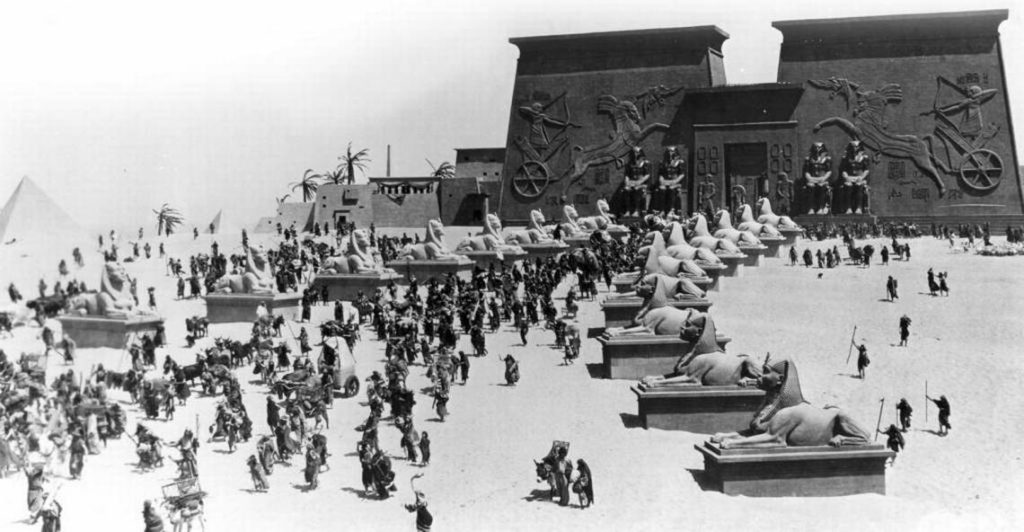
Long before CGI, Hollywood re-creates ancient Egypt in California
Local residents speculated the lost set was buried somewhere nearby, as they collected props that randomly would surface. Some even took parts of the set and used them as lawn ornaments! But over the years, as sand piled up higher and higher, the true location of the set seemed to be a mystery. It wasn’t until 1983 when a group of film fans pinpointed the spot based on DeMille’s autobiography that the set may lie beneath the remote dunes off Guadalupe. And they were right!
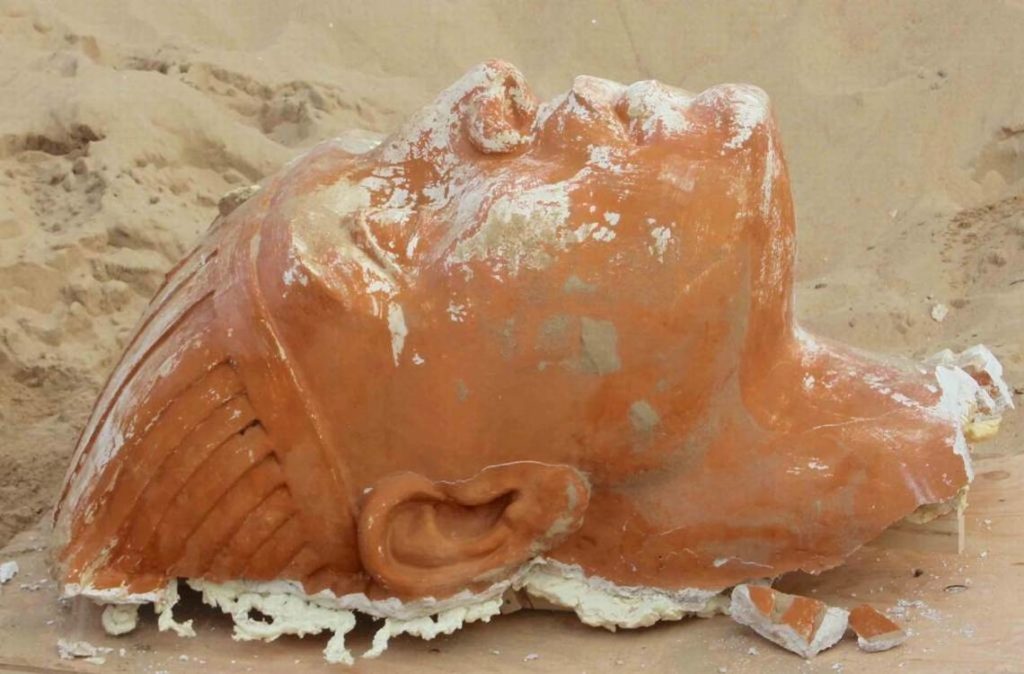
Literally digging up some treasure in the sand. I think the best I’ve ever found one the beach was a $1 bill!
We spent about 1 hour checking out the Dunes Center and chatting with Gaby about life in this tiny, dusty town. And of course, no trip to the area is complete without going to check out the dunes. We drove to Oso Flaco per the recommendation of the Dunes Center. This remote section involves a 45-minute hike out to the dunes, but it’s all flat and is a nice way to get in some exercise. If you’re feeling less athletically inclined (or short on time), you can drive right up to the dunes at Rancho Guadalupe Dunes Preserve.
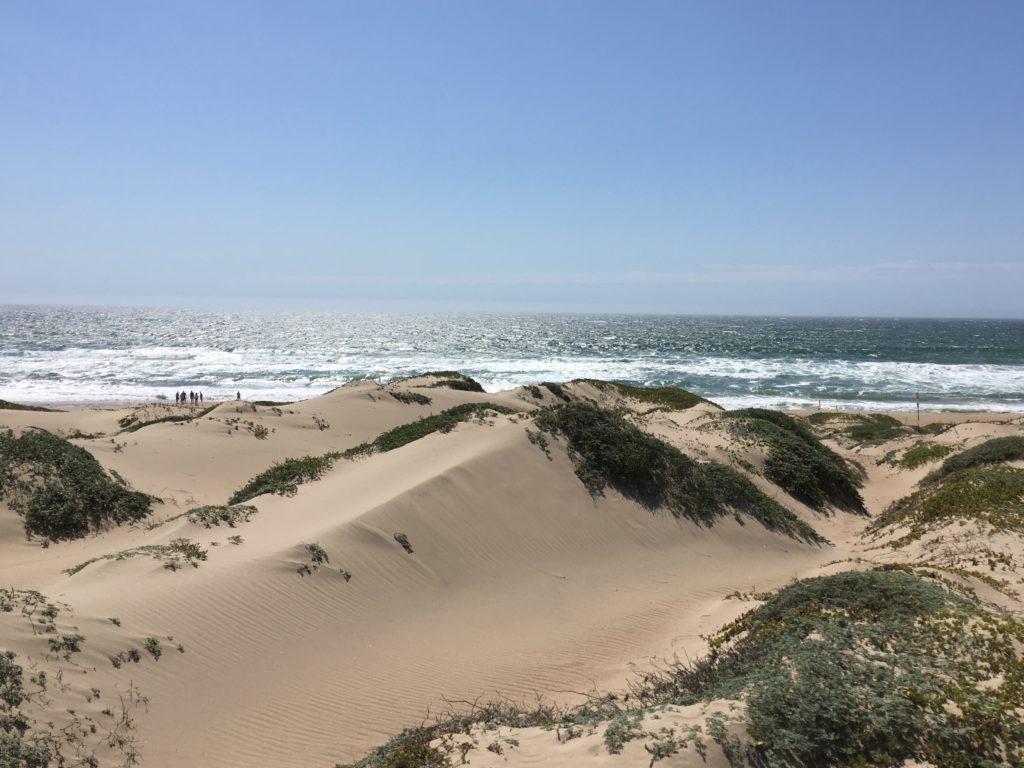
Sand Dunes of Oso Flaco
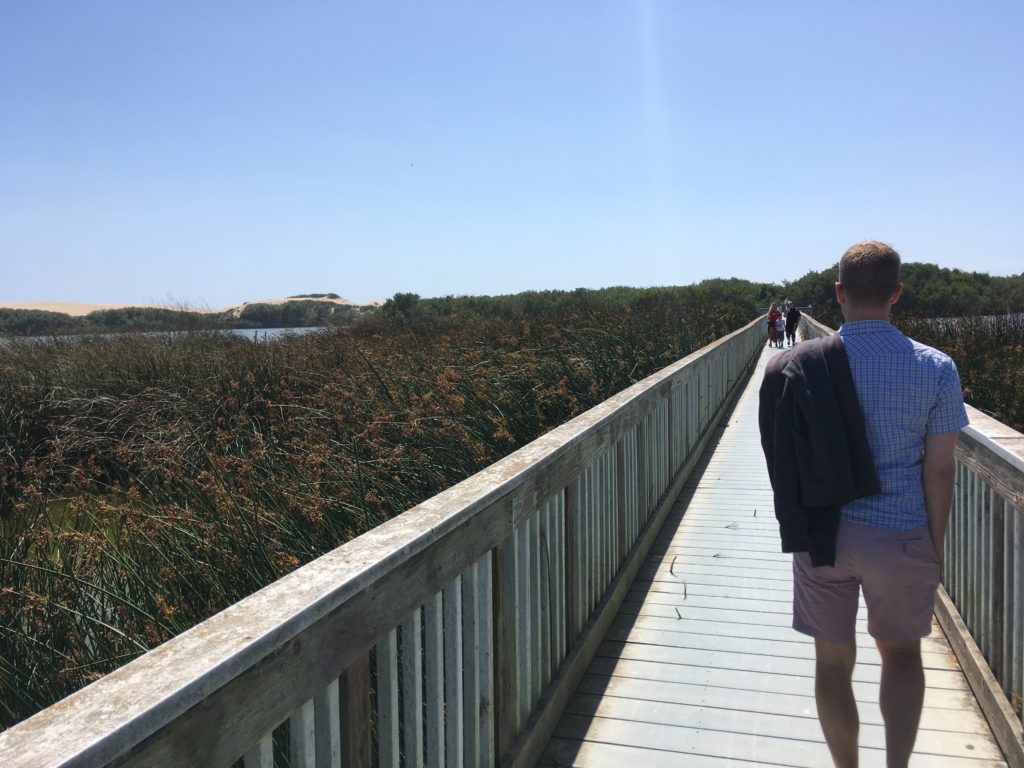
It’s a 45-minute walk each way to the dunes located at Oso Flaco.
We could see why Hollywood has used these sand dunes for so many movies we all have probably seen like Pirates of the Caribbean, Hidalgo and Rocky and Bullwinkle (okay, maybe we somehow missed that last one!). It is well worth the journey along any road trip. And now you can say you’ve seen the great Sphinx of California!
THE LOWDOWN:
- The Dunes Center is located in the downtown strip of Guadalupe, Calif., located just 30 minutes south of San Luis Obispo, or 45 minutes northwest of Buellton.
- The Dunes Center is open Wednesday–Sunday from 10:00 am–4:00 pm. Other days by appointment
- Dunes Center entry cost: Adults are $6.00; Children 12 and under are free. Also, retired and active military members are free.
- Oso Flaco is open daily from sunrise to sunset. It’s about a 45-minute walk to the sand dunes along the coast. Parking/admission is $5 per car.






No Comments, Be The First!